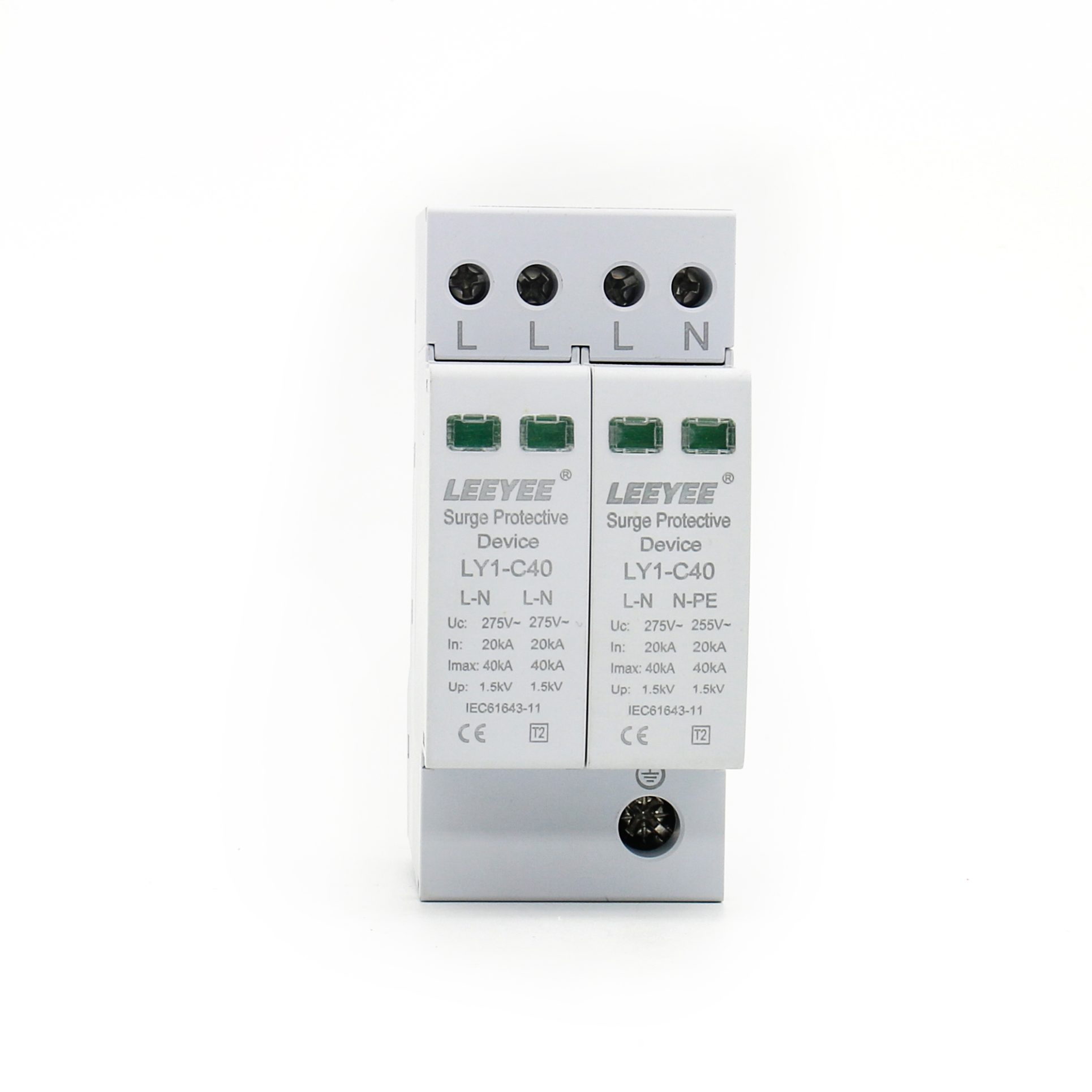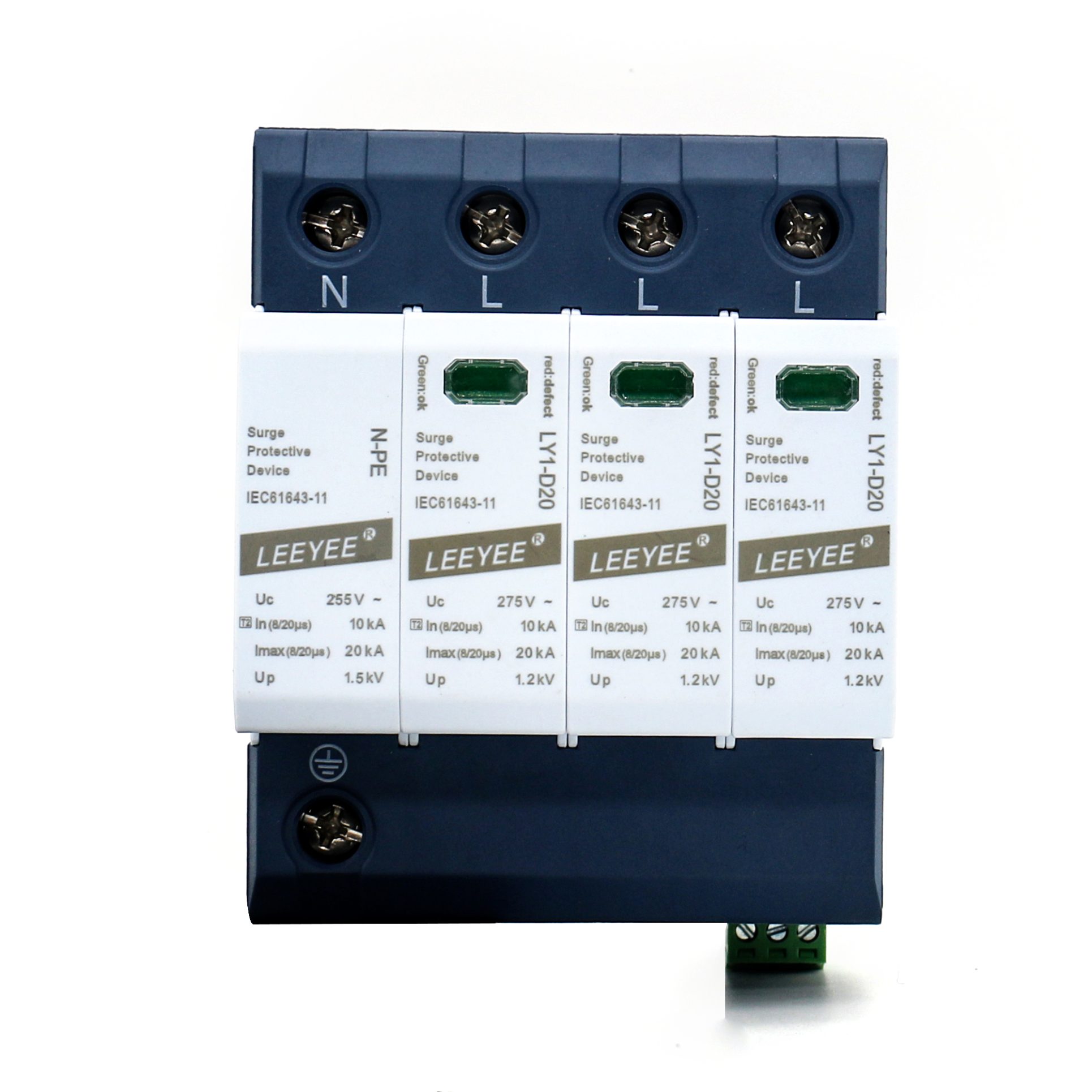Table of Contents
Introduction
With the rapid growth of renewable energy, the importance of a solar surge protector in safeguarding solar power systems has increased dramatically. As solar panels and inverters become more common in both homes and businesses, understanding the function and necessity of a solar surge protector is vital. This article explores what a solar surge protector is, how it works, how to choose and install one, and why ongoing maintenance matters.
What is a Solar Surge Protector?
A solar surge protector is a specialized device designed to shield solar power systems from transient voltage spikes. These spikes—often triggered by lightning, grid switching, or electrical faults—can severely damage inverters, batteries, and panels. As a result, they may cause expensive repairs or total system failure. A high-quality solar surge protector, such as those developed by LEEYEE, offers a crucial line of defense against such incidents.
LEEYEE, a specialized manufacturer in lightning and surge protection since 2009, offers solar surge protectors tailored for photovoltaic systems. Its PV SPD products, compliant with IEC 61643-11 and UL 1449, support up to 40kA nominal discharge current, a benchmark in the industry.
Why Solar Surge Protectors Are Important
-
Prevent Equipment Damage
Solar systems include sensitive components vulnerable to electrical surges. Surge protectors extend their lifespan by redirecting excess voltage safely to ground. -
Enhance System Reliability
By preventing outages and damage, they reduce maintenance costs and ensure continuous operation of solar systems. -
Ensure Operational Safety
Voltage surges can pose fire risks. Using a surge protector minimizes these hazards and secures your solar infrastructure. -
Improve Energy Efficiency
Uninterrupted, surge-free systems maintain consistent output, improving the efficiency of solar energy conversion.
How Solar Surge Protectors Work
Surge protectors act by detecting abnormal voltages and responding instantly. Internally, they feature components such as:
-
Metal Oxide Varistors (MOV): Absorb and suppress excess voltage.
-
Gas Discharge Tubes (GDT): Divert high-energy surges to ground.
-
Diodes: In DC circuits, they block reverse current caused by surges.
Workflow Overview
-
Voltage Monitoring: Constant tracking of circuit voltage.
-
Surge Detection: Activation upon exceeding preset voltage thresholds.
-
Diversion to Ground: MOVs respond immediately, protecting devices.
-
Reset: After stabilization, the SPD resets, remaining on standby.
Types of Solar Surge Protectors
-
Type 1: Installed at the system’s service entrance. Designed for external surges (e.g., lightning).
-
Type 2: Positioned near inverters or AC/DC panels. These defend against internal surges.
-
Type 3: Applied to individual loads, such as inverters or batteries, for point-specific protection.
Choosing the Right Solar Surge Protector
When selecting a solar surge protector, consider the following:
-
Surge Current Rating (kA)
Match the SPD to the maximum expected surge level in your location. For instance, areas with frequent lightning require SPDs rated at or above 40 kA. -
Clamping Voltage
Lower clamping voltage offers better protection as it reacts faster to stop the surge. -
Response Time
Opt for devices with nanosecond-level response times to prevent transient surges from harming your system. -
Certifications
Choose products certified to standards such as IEC 61643-11 and UL 1449 to ensure safety and compliance.
Installation Best Practices
To ensure effective operation, follow these tips:
-
Use Manufacturer Guidelines
Adhere strictly to installation manuals to avoid performance loss. -
Placement Strategy
Install Type 1 devices at the service entrance, Type 2 near the inverter or combiner box, and Type 3 directly on sensitive devices. -
Grounding
Maintain a short, direct grounding path to divert surge current efficiently. -
Regular Visual Checks
Periodically inspect for damage or wear that may impair performance.
Maintenance and Testing Guidelines
Routine maintenance ensures long-term protection:
-
Visual Inspections
Look for signs of overheating, discoloration, or casing cracks. -
Functional Testing
Use SPD testers or consult professionals to confirm responsiveness. -
Replacement After Major Surges
After a severe lightning event, even if undamaged visually, the SPD might need replacement. -
Annual Professional Checkups
Have a qualified technician inspect your full PV protection system yearly.
Market Outlook
As clean energy adoption rises, so does the need for solar protection devices:
-
Smart Technology Integration
Many SPDs now feature remote monitoring and data logging, improving real-time diagnostics. -
Adaptability to Modern PV Systems
Newer SPDs are compatible with hybrid solar arrays, microinverters, and battery banks. -
Policy and Subsidies
Governments worldwide incentivize solar adoption, boosting demand for reliable surge protection systems.
Conclusion
In today’s solar-driven energy landscape, the solar surge protector is no longer optional—it’s essential. It defends critical equipment, supports safe operation, and ensures the longevity of solar infrastructure. Whether for a home rooftop array or a commercial solar farm, investing in a reliable solar surge protector guarantees maximum energy yield and peace of mind.
Need help choosing the right SPD for your solar system? Contact LEEYEE today—your professional surge protection partner.


